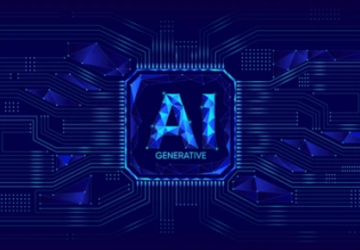Succeeding in your multi-stakeholder industrial projects: the key role of information sharing.
At the heart of multi-stakeholder industrial projects lies a key challenge: information sharing. Navigating the ocean of big data is a titanic challenge, but it is necessary to meet it to avoid the unfortunate consequences of fragmented information: redundancies, inconsistencies, errors, interoperability issues… and the inevitable time losses and additional costs that result.
Fortunately, there are solutions to address these challenges and implement sound and efficient information management. In this perspective, digital solutions – with the digital twin at the forefront, offer immense potential to support industrial project managers.
The challenges of information management.
The complexity of information sharing in industrial projects
The success of a complex industrial project relies on effective information sharing among countless stakeholders. From the project manager to the subcontractor, through design offices, classification bodies, and suppliers… These actors generate multiple flows of document and information exchanges (2D and 3D plans, technical specifications, spreadsheets, test results, quality reports, etc).
Furthermore, actors in these types of projects often operate in silos, each using their own tools and data formats. From spreadsheets to 3D design tools, through specialized document management systems, each stakeholder has their preferences, adding an additional layer of complexity.
In summary, the complexity of information sharing is proportional to the number of stakeholders involved and the diversity of data produced. However, the complexity of information flows is a major problem that, if not seriously addressed, can lead to potentially serious errors.
The pitfalls of poor information management.
A poor management of information in the context of an industrial project results in a lack of fluidity in exchanges between stakeholders. We have identified the typical pitfalls encountered in this type of project:
Data silos and information fragmentation
If we reduce an industrial project to the sum of the data produced by each participant, one could say that no one fully knows the project. Each participant holds a piece of the puzzle in their information system, but the compartmentalization of data hinders the effective dissemination and use of data, so no participant has a complete view of the project.

This fragmentation of information is exacerbated by the diversity of systems and software used, as well as the variety of file formats. It gives the impression that not one, but several parallel projects are being built. In summary, although the information produced is more comprehensive and accurate than ever, its utilization proves particularly challenging.
Redundancies and inconsistencies
As the project progresses, documents, especially drawings and designs, are constantly revised. This proliferation of documents and versions can lead to a lack of synchronization, leaving stakeholders working “blindly,” unaware of the progress of other teams.
This situation is conducive to mistakes and inconsistencies. For instance, if a design change is not properly communicated, it can lead to delays and cost overruns, such as ordering unsuitable materials or the need for costly and time-consuming adjustments. Proper management of these issues of duplication, redundancy, and version synchronization thus becomes essential for the successful completion of the project.
Compatibility and interoperability issues.
Interoperability is a crucial issue in information management. However, it is challenged by the diversity of tools and data formats used. For example, an engineering team might work with specific 3D modeling tools, while another team might prefer a particular task management software. These tools can generate files in different formats, not recognized by other systems.
This lack of interoperability creates a barrier to the smooth exchange of information. If a team cannot open an important file because they don’t have the right software, it can slow down the project. Likewise, if data cannot be integrated from one system to another due to incompatibilities, it can lead to a loss of crucial information, misunderstandings, and delays in completing the project.
Improving information management through digital means.
Now that we have identified the problem and its consequences, let’s explore how digital tools, especially the digital twin, improve information management.
The benefits of optimized information management.
Digital transformation solves problems and creates new ones. The good news is that it can also provide solutions to these new problems. Here’s a brief overview of the benefits that digital technology can offer:
Smooth exchanges and mutual understanding: Collaborative platforms such as Microsoft Teams are useful for allowing stakeholders to share files, chat in real time, and organize virtual meetings, thus promoting better coordination.
Visualization of the overall project progress: project management software such as Jira or Asana offer interactive dashboards and task tracking features, allowing each stakeholder to visualize the progress of the project in real time.
Anticipating problems: Data analysis tools like PowerBI or Tableau are efficient. These tools allow for extracting relevant insights from project data and generating preventive alerts to signal potential issues.
More effective decision-making: Business Intelligence tools like QlikView or SAP BI centralize information and present it in an understandable form, thereby facilitating data-based decision-making. For instance, detecting a cost increase might prompt a review of certain procedures to optimize spending.
All these tools provide concrete solutions to the problems posed by information management within an industrial project context.
However, one might be tempted to think that multiplying tools equates to feeding the problem by adding complexity. But this overlooks the digital twin technology, which allows for the unification of all tools and data sources.
The digital twin: a revolutionary tool for information management in industrial projects.
The digital twin technology represents a significant leap in information management within the industry. A digital twin is much more than a simple 3D replica. It includes the physical aspects of a product, as well as all project variables (time, budget, materials, thicknesses, etc.).
Unlike traditional methods of information sharing which can suffer from access and synchronization issues, the digital twin centralizes all project information on a single platform. When a participant adds information to the digital twin, all other stakeholders are instantly informed. This approach eliminates concerns about document versions and ensures constant updating of the model.

The collaborative potential of the digital twin goes beyond simple coordination. It facilitates exchanges between all parties involved and allows for effortless iterations. By providing a complete view of the project in all its aspects, the digital twin promotes a better understanding and more informed decision-making. At each stage, it provides stakeholders with all the necessary information to make the most judicious decisions and actively participate in the project’s progression.
Multi-stakeholder industrial projects require optimized information management to avoid fragmentation, redundancies, inconsistencies, and interoperability issues that arise from the complexity of such projects.
The adoption of the digital twin centralizes and simplifies this information sharing, promoting smooth collaboration, a better understanding of the project, and informed decision-making.
Better understand the possibilities of SmartShape?
Schedule a demo

